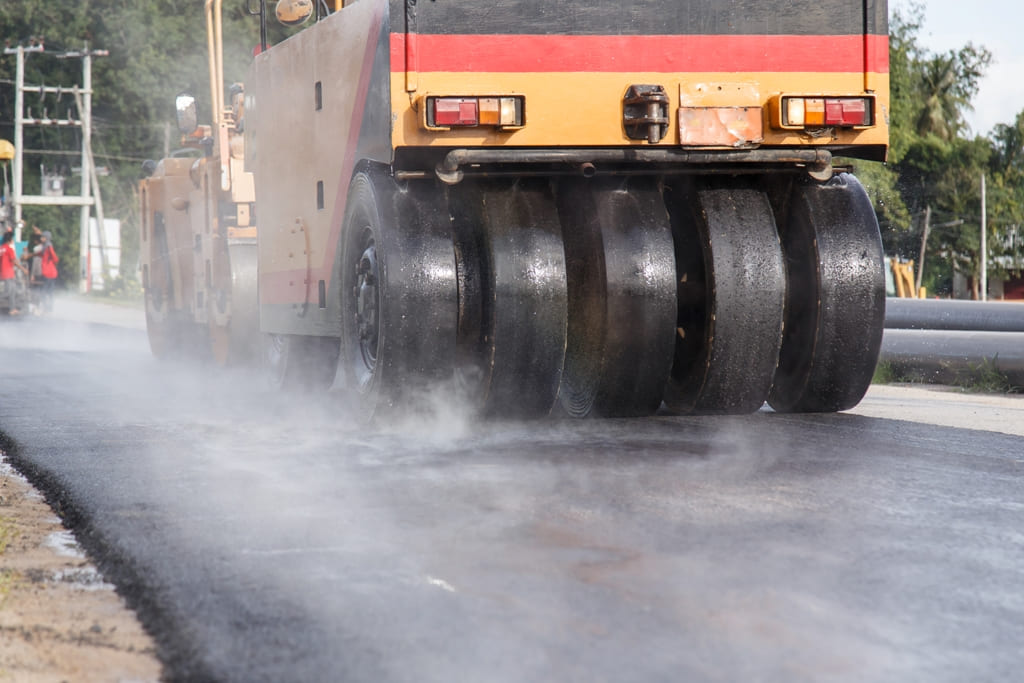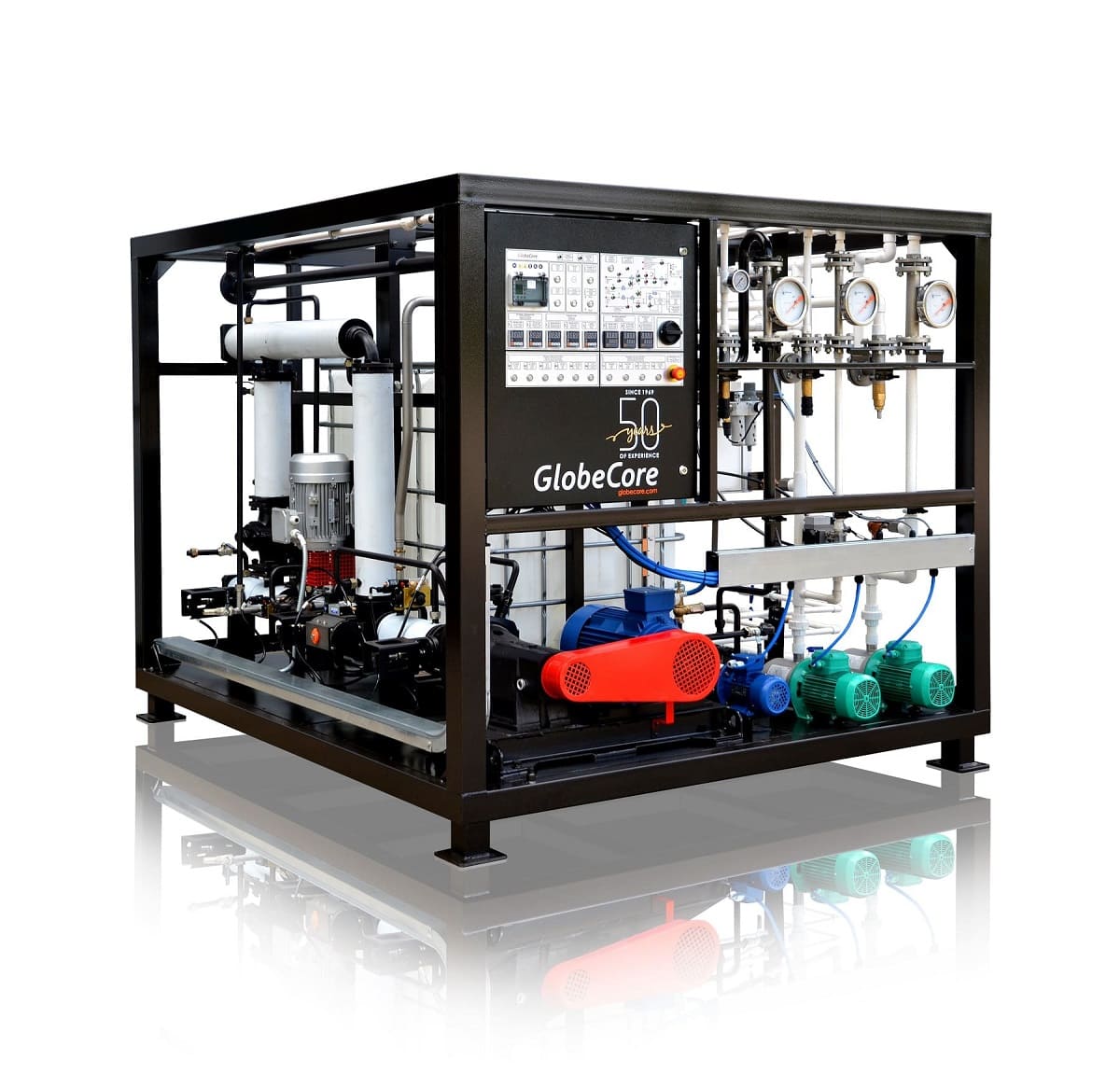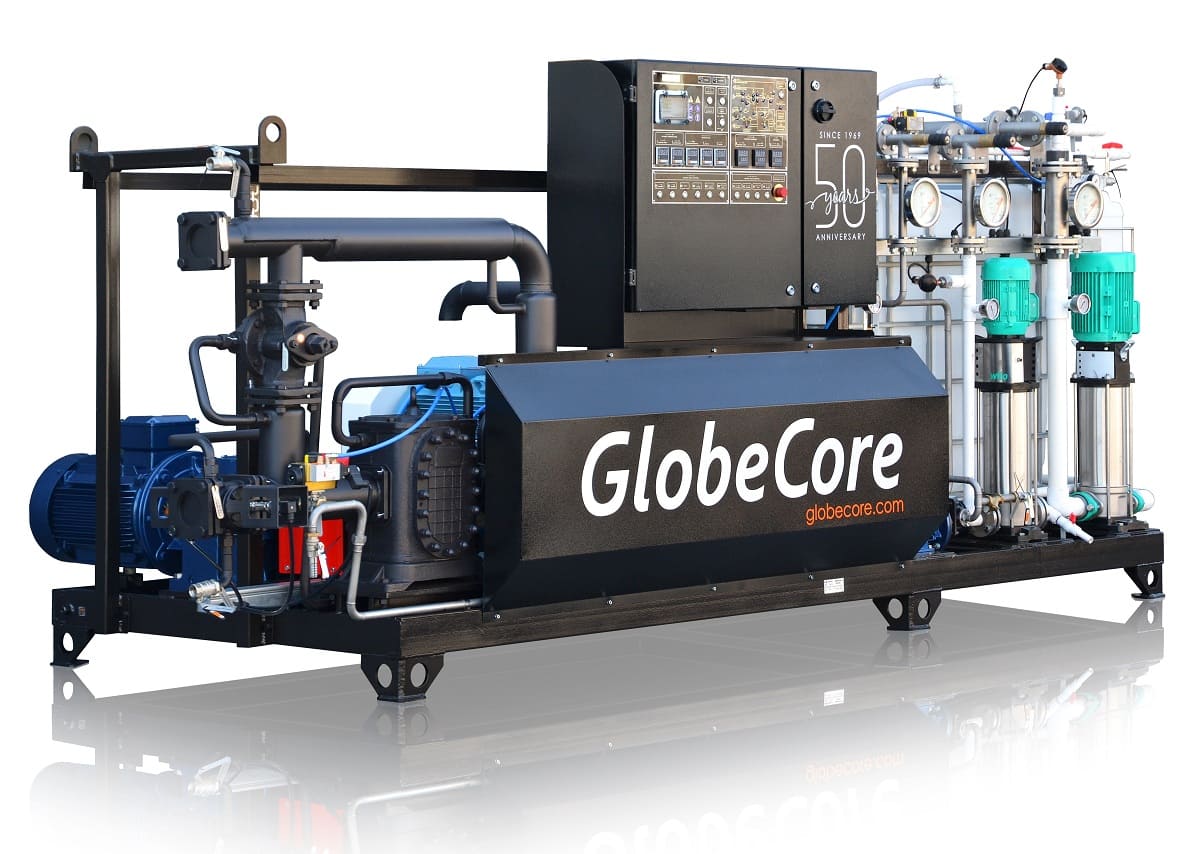The two major groups are water-in-oil and oil-in-water emulsions. Besides, bitumen emulsion are classified according to the rate of separation: fast, medium and slow breakdown emulsions.
The first groups includes emulsions which separate soon after contacting the mineral material. The smaller the particles of the mineral material, the faster the breakdown. Medium breakdown emulsions separate after a moderate time after contact with the mineral surface. Slow breaking emulsions only separate after part of the water evaporates or permeates the pores of the mineral material, which only happens after a relatively significant time.
It should be noted that the rate of emulsion breakdown depends a lot on the properties of the surface the emulsion is applied to, and the form of the material, which means that the same emulsion may breakdown with varying speed. The same emulsion may be a fast breaking emulsion for one material and medium or even slow breaking with another mineral.
Based on the type of binding materials, emulsion are classified into bitumen emulsions and coal-tar emulsions.
Emulsions are made by mechanically mixing hot liquified binding material with warm water solution of a surfactant in dispersers rotating at 1500-1000 rpm and agitators rotating at 50-200 rpm.
The process of bitumen emulsion production is as follows. Water and emulsifier are supplied to a container for heating at 60-70°. A water solution of the emulsifier is supplied by a centrifugal pump into the disperser. The amount of the solution indicated by a flow meter and adjusted accordingly. Bitumen is supplied to a boiler for heating to 110-120°C and is then pumped through a flow meter to the disperser. The finished emulsion product is output into a collection vessel.
Acidic emulsions can be produced with any water, but some alkaline emulsions require low hardness water (less than 8%).
Emulsifiers (surfactants) obviously must be soluble in water; this may also be achieved by adding special solvents.
Alkaline bitumen emulsions
Alkaline emulsions are made with anionic surfactants, such as carbon acid salts-soaps compounds.
Depending on the type and amount of surfactant used, it is possible to produce fast, medium and slow breaking emulsions.
The amount of bitumen (usually viscous) in the emulsion is 55-60% (including the water already contained in bitumen). The bitumen is heated to 95-120°C for the process.
Acidic bitumen emulsions
These cationic emulsions are made from low viscosity or liquified bitumens. Cationic amine surfactants are used for emulsification. Amines form by replacing one, two or three hydrogen atoms in ammonia molecules with a hydrocarbon radical, resulting in methylamin, dimethylamine and trimethylamine respectively.
Emulsions are produced by machines called dispersers. The finished product is a finely dispersed dark brown liquid, does not produce sediment for two months in storage and does not separate. The concentration of bitumen may be as high as 70-75%, but is usually lower, approximately 55-60%.
Acidic or coal-tar emulsions are usually fast breaking, and the rate of breakdown increases proportionate to the specific area of the mineral surface (especially true to ground). The rate of breakdown can be reduced with additives, such as chlorhydrate amine. Slow breaking emulsions, such as emulsion for ground impregnation, are made by combining amine additives with organic and non-organic acid salts, zinc, calcium and other polyvalent metal chlorine compounds etc.
The ability of acidic emulsion to mix with sand and small fraction soil and its breakdown rate can be adjusted by diluting the binding by choosing and portioning a thinner.
Coal-tar water in oil emulsions
Water in oil emulsion used for treatment of damp ballast or gravel are made from coal tar or shale bitumen.
Depending on the ambient temperature of mineral material treatment, different binding materials are used in emulsion production. If the temperature is near freezing point, low viscosity binder is used, while at 10-15°С and above, a more viscous material is chosen.
The ratio of the water solution and the binding material in emulsion is chosen depending on the humidity of the mineral surface: at 2% humidity the ratio is 30:70, growing to 25:75 and 20:80 for higher humidity.
Double emulsions in road construction
Double emulsion are made with viscous coal tar and liquid bitumen. The total concentration of binder in a double emulsion is approximately 70%. The water solution is made with sodium hydroxide in the amount of 2% of the weight of the binder. The emulsion includes approximately 5% of alkylaryl sulfinate.
Double emulsion can be made in a mixer. Coal tar is supplied to the mixer by a gear pump, after heating to 50—60°C. A water solution of sodium hydroxide, alkylaryl sulfonate and bitumen are added. The mixture is stirred for 15-20 minutes. This kind of emulsion is stable to freezing temperatures and has a long storage life. It is almost insoluble in water and can be used for treatment of material surfaces in the rain. This product is fairly thick at normal ambient temperatures, and must be heated to 60-80°C before use. Ballast is treated in open agitators, even in sub-zero temperatures (as long as there is no icing on the surface).
Bitumen paste
Bitumen pastes are made in agitators on site, using finely dispersed minerals (such as sand or lime powder), organic binder and water. They are used for permeation of road coat or thin film surface coating (3.5-6 mm).
According to research, the mineral portion of the paste must contain particles no larger than 2 mm and as small as 0.0006mm, i.e. 0.09-2 mm sand and mineral powder with particles smaller than 0.09 mm. Water in this paste is secondary. The water film fills uneven surfaces of the mineral particles. Particles with rough or edgy surfaces need more water than smooth ones. Water consumption is approximately 1.8-2.5 that of the binding material.
After application, the wet paste contracts. If it is distributed in thin layers, the settling is uniform.
Pastes are made in agitators. The appearance should be uniform, finely dispersed and matte. It should be mixed before application, adding water if necessary.
Paste settles due to water evaporation, when the water film is replaced with bitumen with a rather strong hydrophobic adhesion. The paste should not be disturbed in the process. In normal ambient conditions at 20°С and moderate wind, the process only takes 30 minutes. In cold weather, slow freezing does not interfere with settling.


 USB-2 Bitumen emulsion ...
USB-2 Bitumen emulsion ... USB-2 Bitumen emulsion ...
USB-2 Bitumen emulsion ...